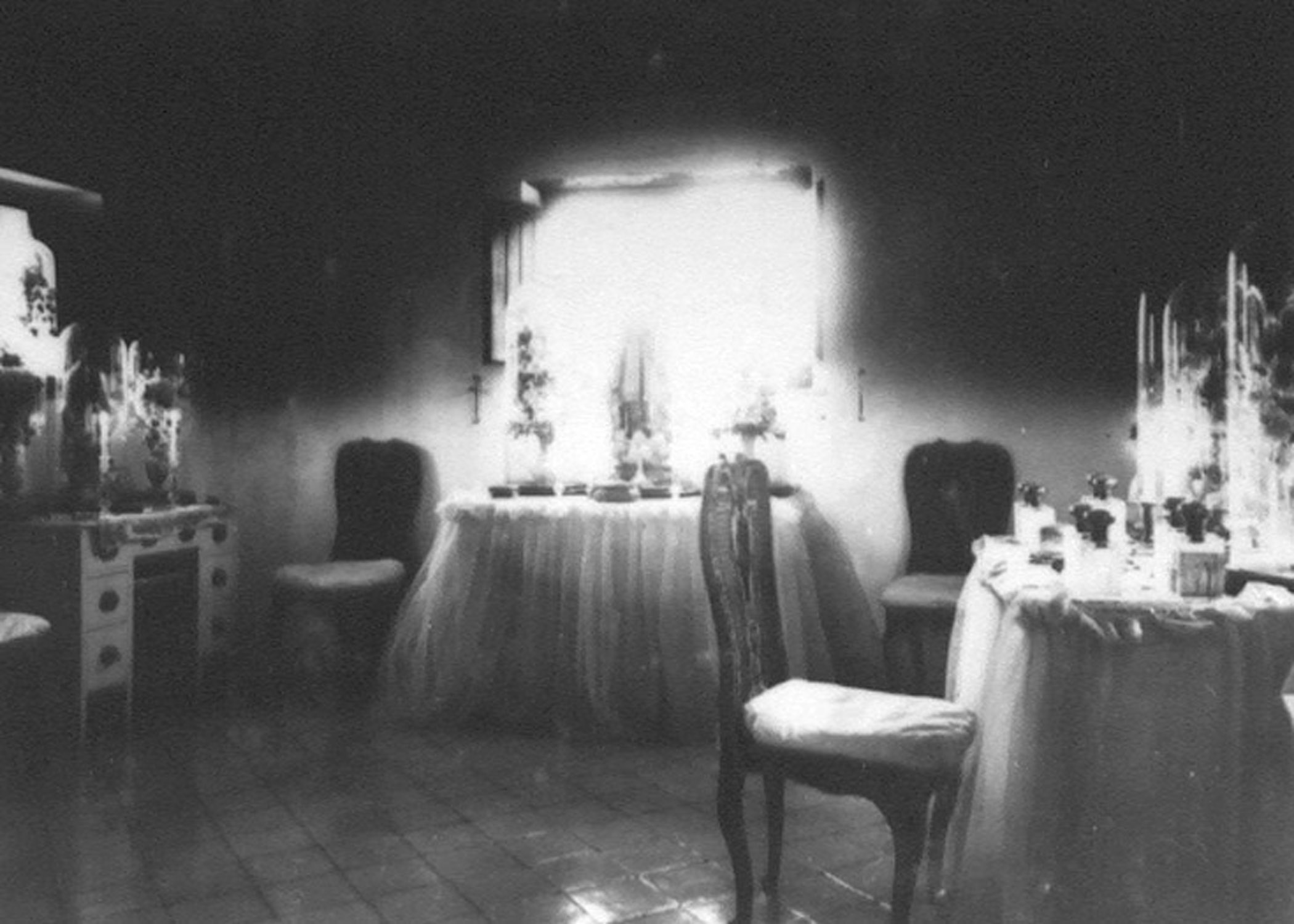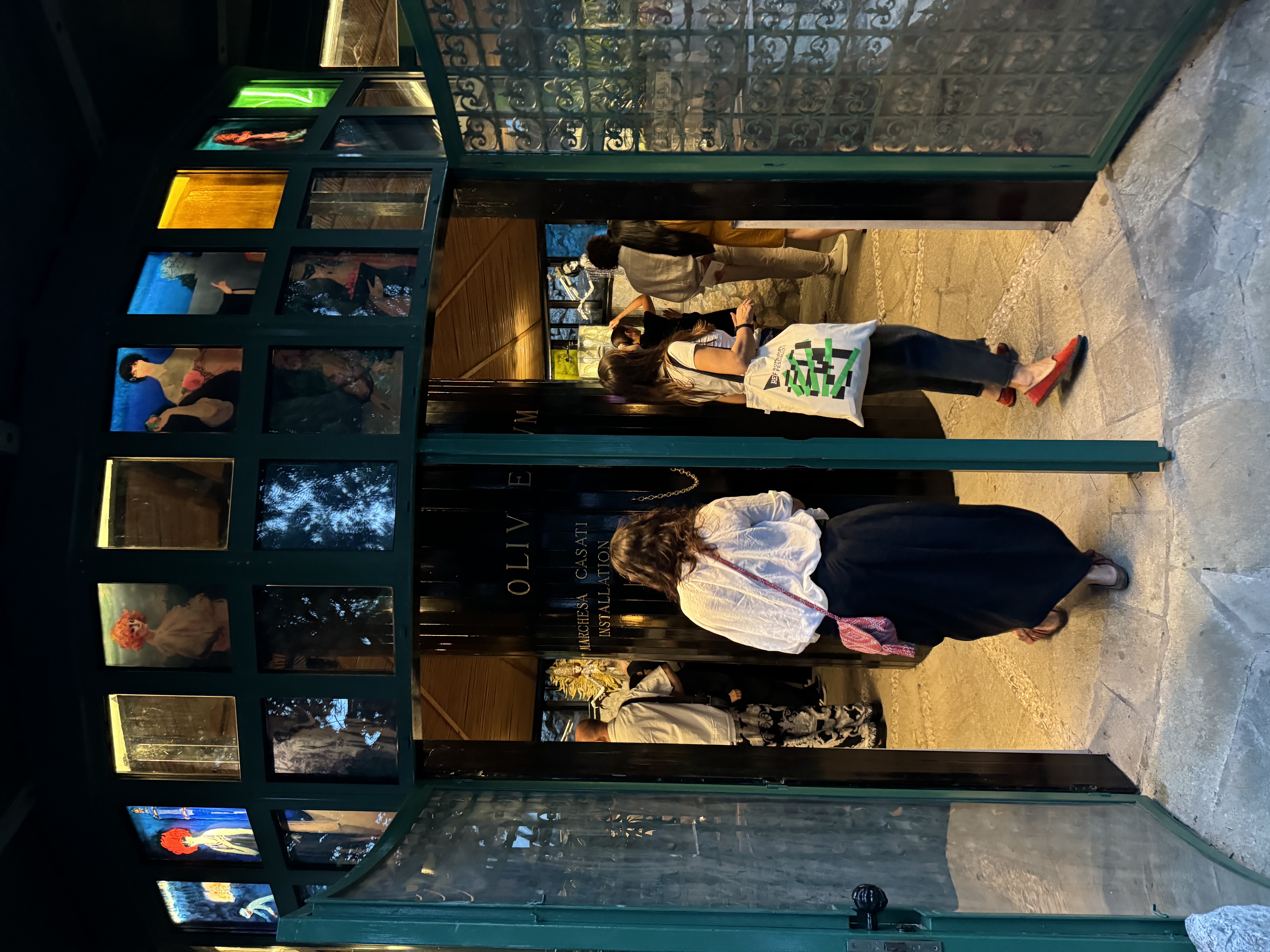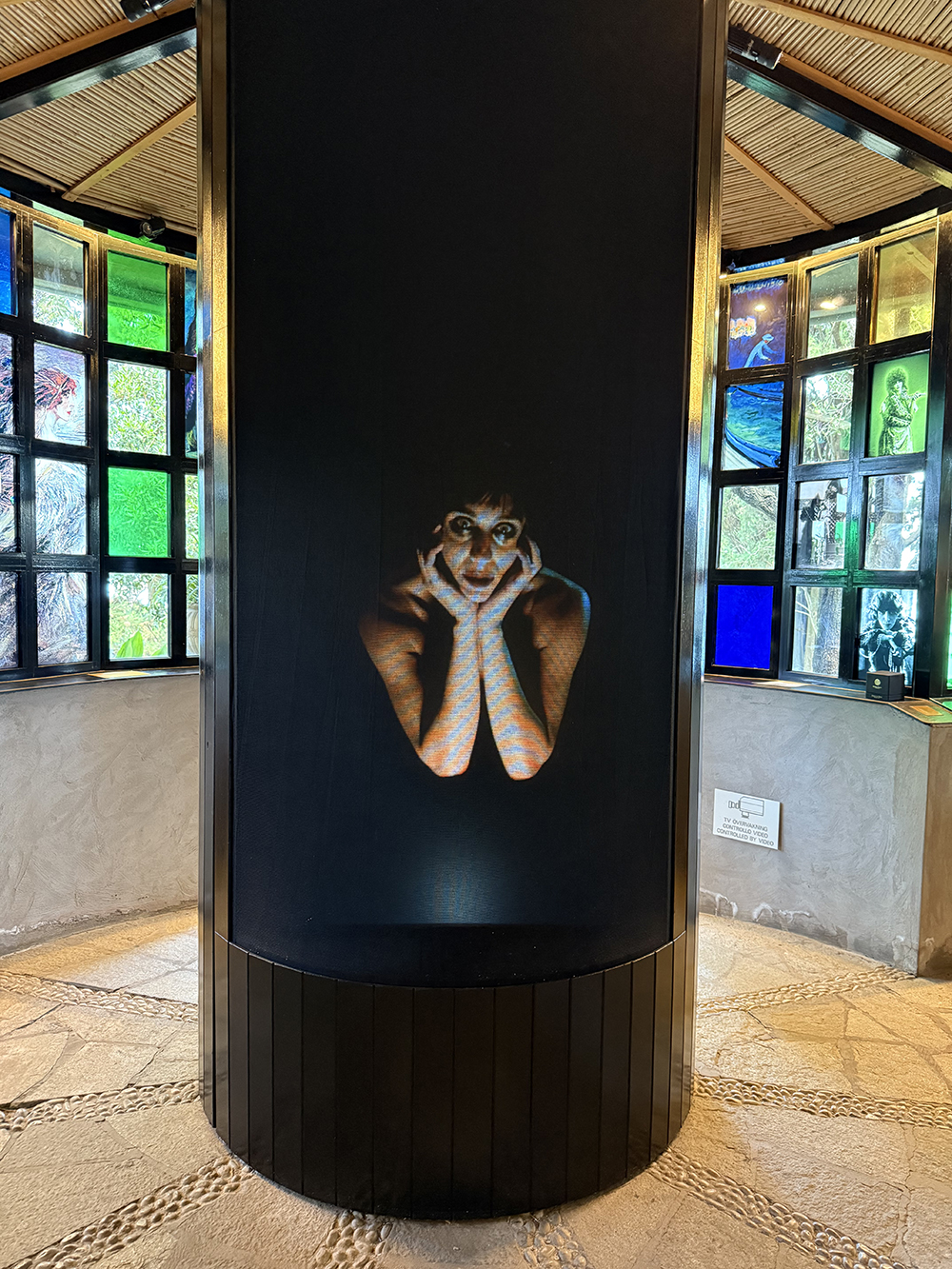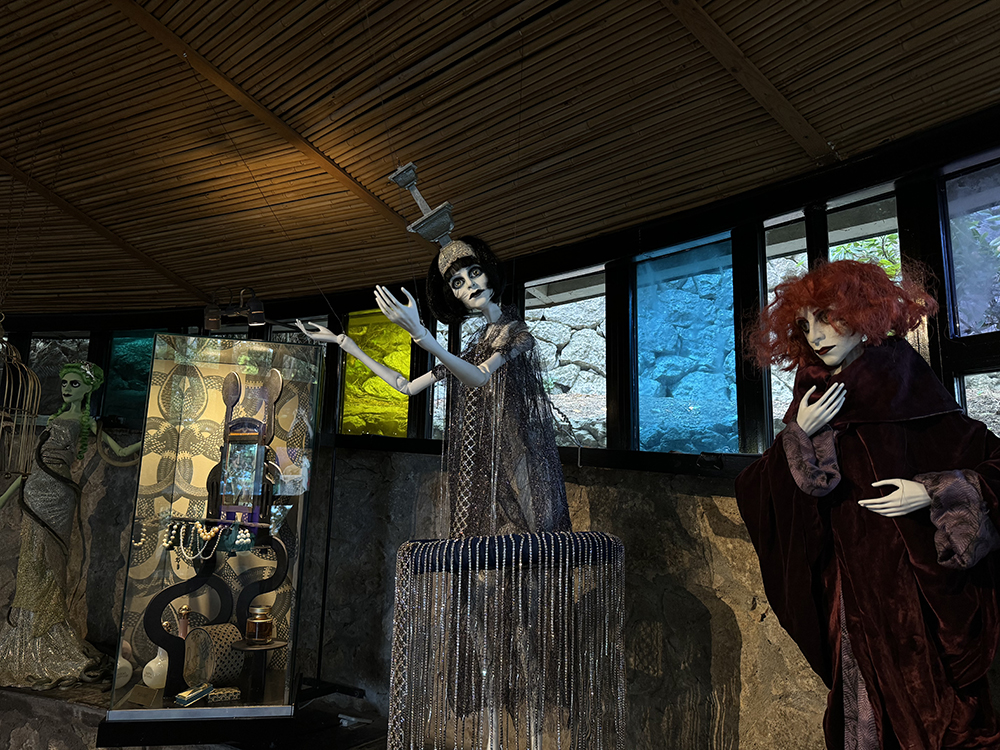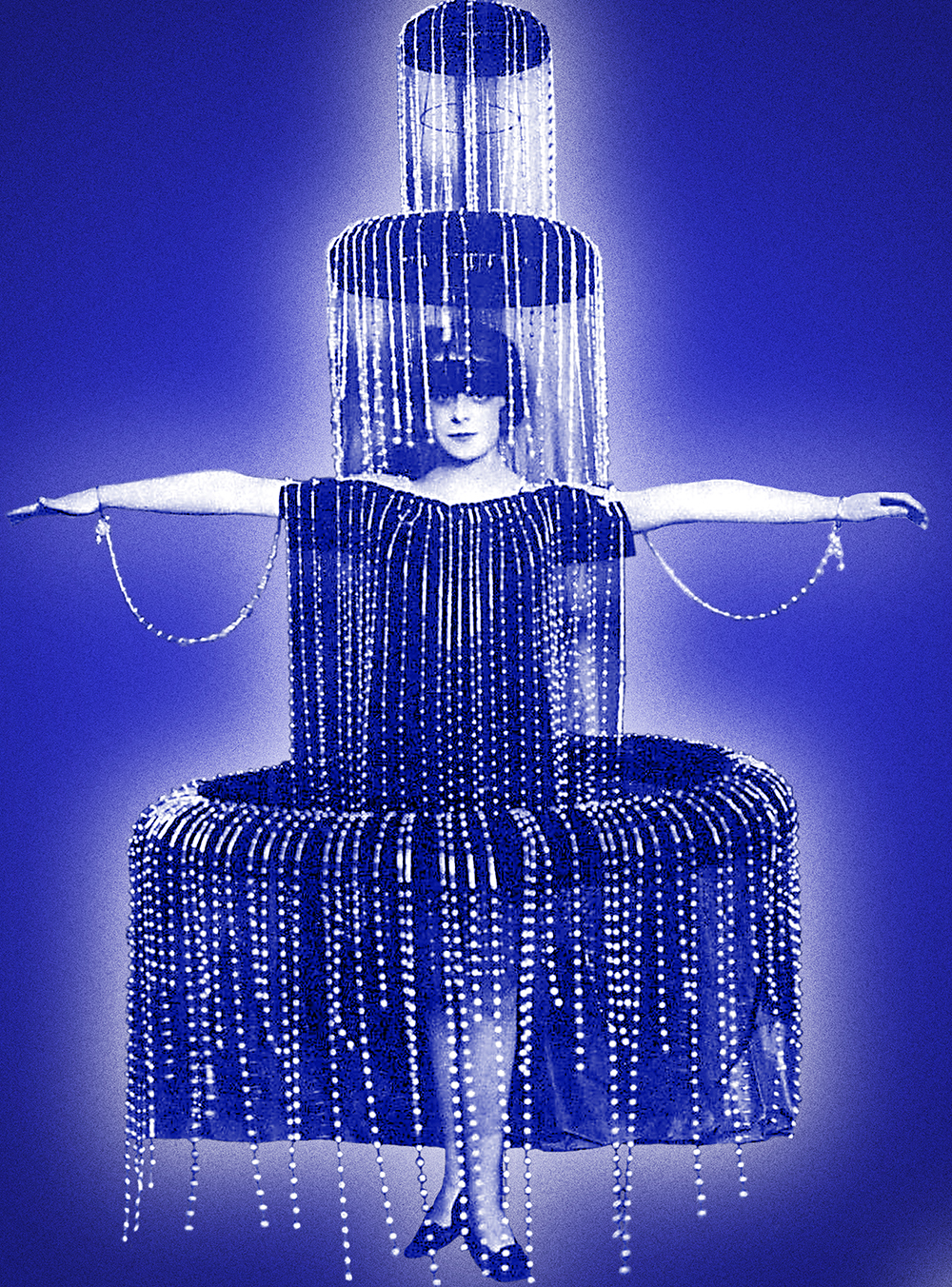
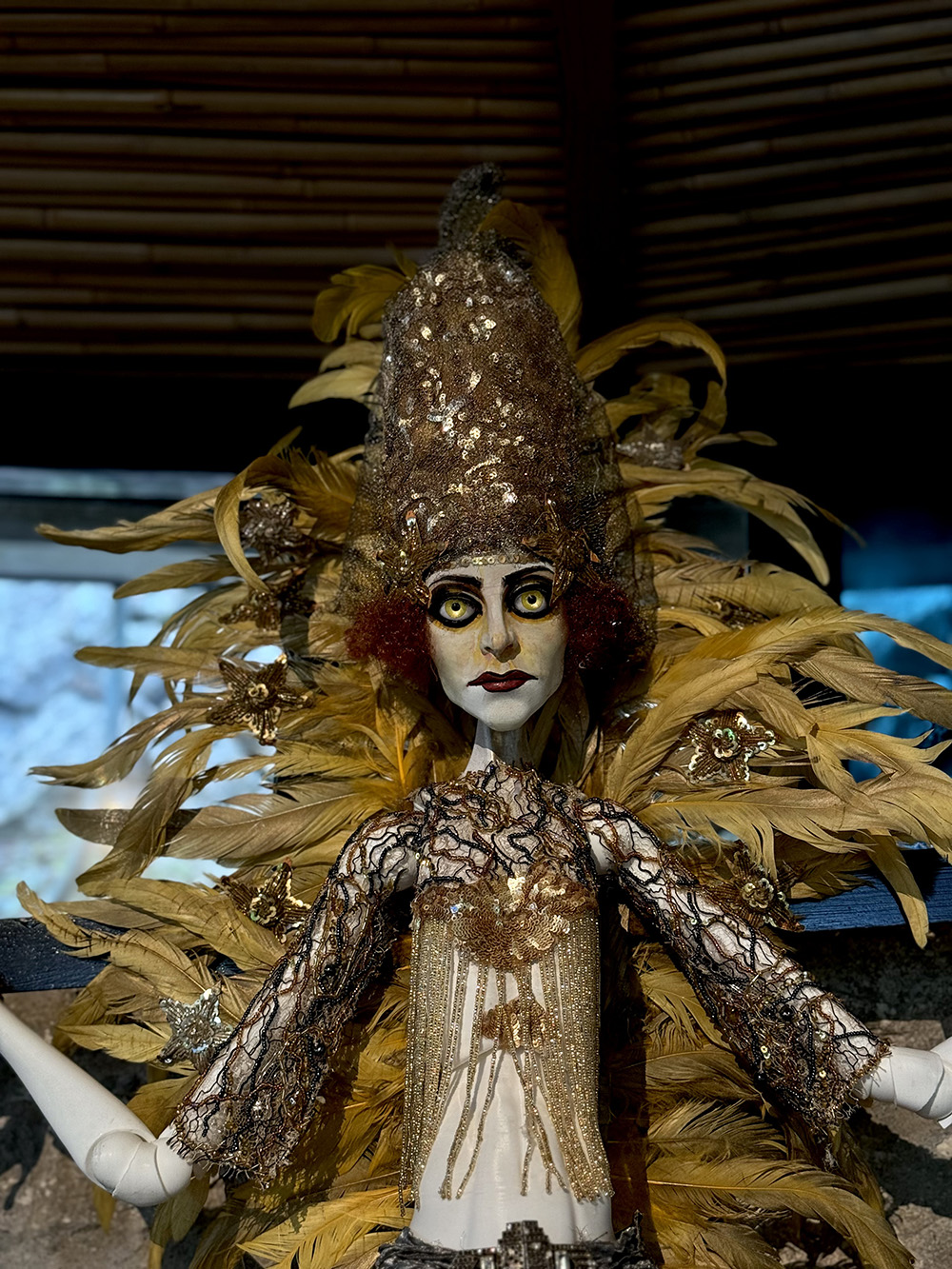

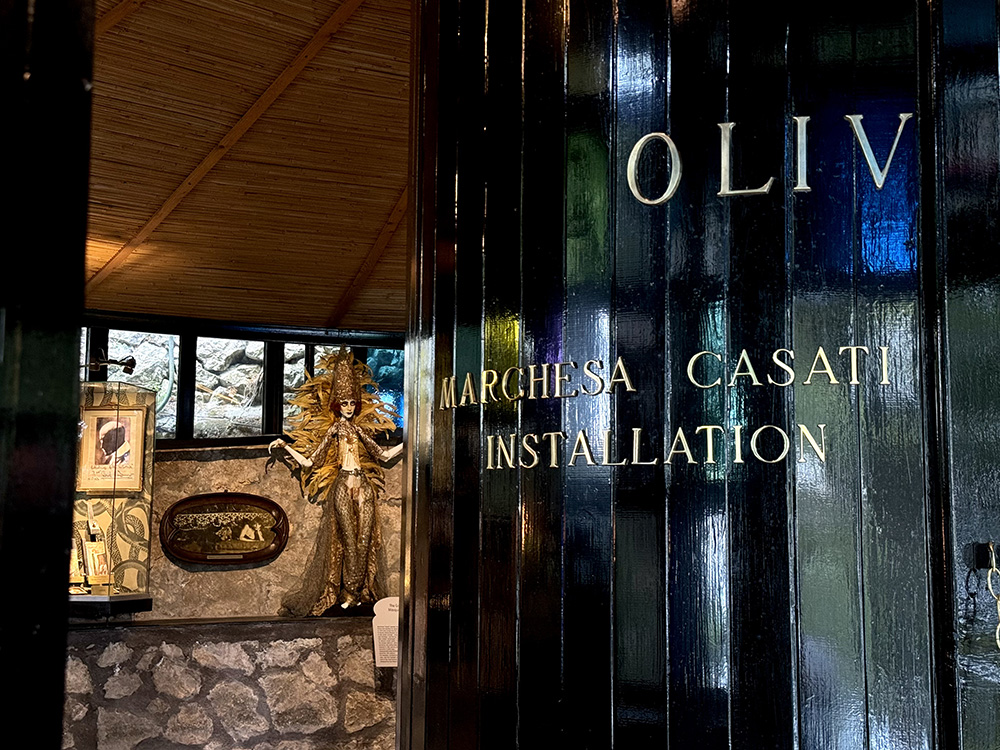

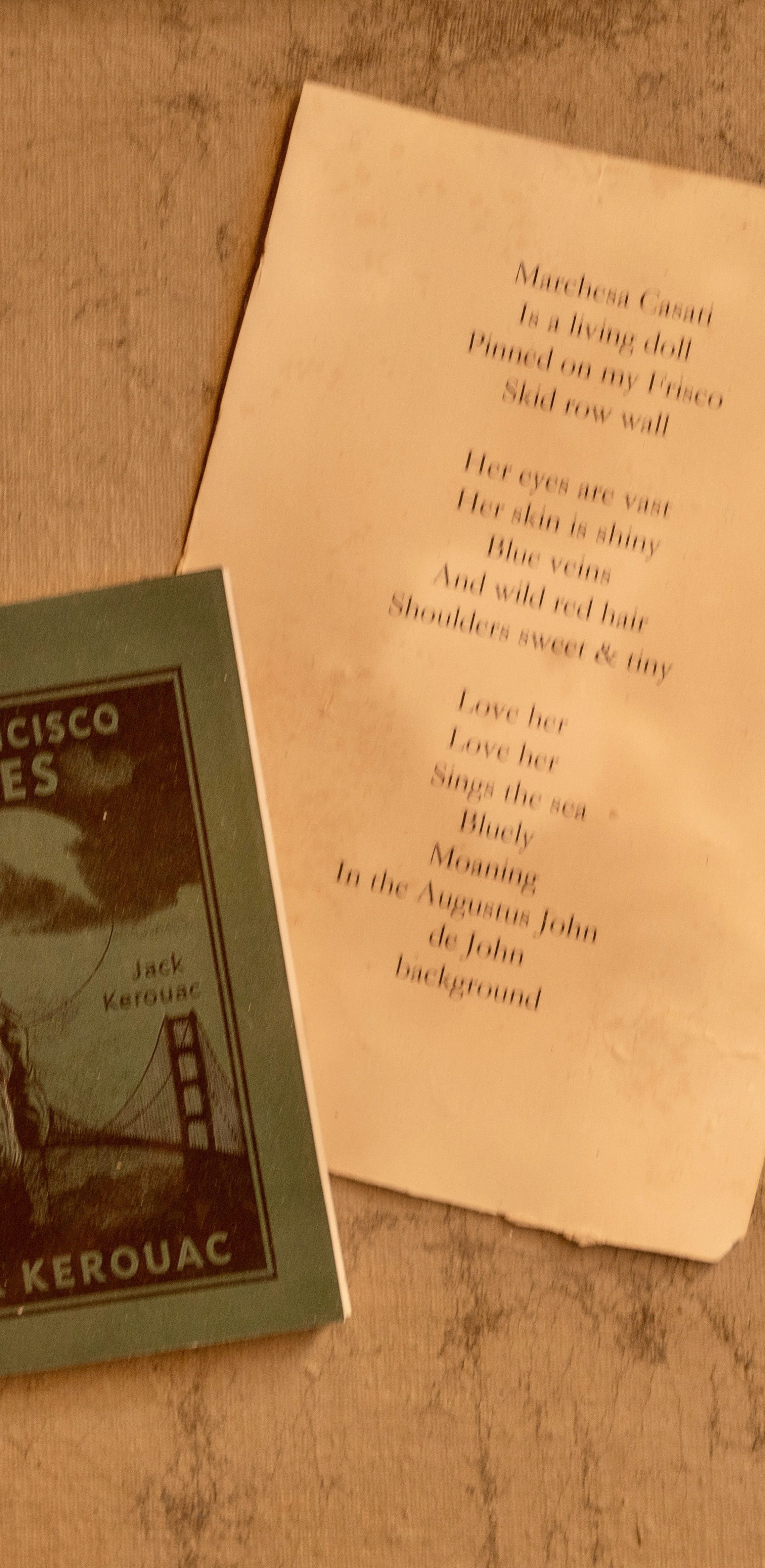

Luisa Casati Stampa & Marchesa Casati Installation
“I want to be a living work of art..”
– Luisa Casati Stampa
This was the motto of Luisa Casati Stampa (1881–1957), the eccentric Marchesa who rented Villa San Michele from Axel Munthe in the 1920s.
Born Luisa Amman, she was only 18 when she inherited a vast fortune from her father’s cotton industries. She married the Marquis Camillo Casati Stampa di Soncino and had a daughter, Cristina. However, domestic life didn’t interest her.
Instead, Luisa sought a place in the international jet set. One step in that direction was the celebrated portrait by high-society painter Giovanni Boldini. Another was her fateful encounter with the eclectic Italian writer Gabriele D’Annunzio, who became her lifelong lover and encouraged her rebellion against bourgeois norms. D’Annunzio was a central figure in the Decadent movement but also a source of inspiration for Futurism and Fascism.
Drawn to Venice and Paris, Luisa lived in grand palaces, hosted extravagant masquerade balls, and stunned guests with her flamboyant costumes. One of the most portrayed women of her era, she also turned her own body into a living canvas or sculpture, becoming a performance artist before the term existed.
In 1920, she arrived in Capri, still determined to amaze. At the time, the island attracted international artists, writers and intellectuals who enjoyed living without restrictions. To Villa San Michele, Luisa brought her tame cheetah and pet boa, draped the villa in black velvet, held séances in darkened rooms and parties in the garden. Axel Munthe tried to evict her, but she left on her own terms.
Luisa squandered her fortune, staging her life as an endless, limitless performance. She died in London, poor but unbroken, never surrendering to a “normal” life. Her grave at Brompton Cemetery bears the words from Shakespeare’s Antony and Cleopatra: “Age cannot wither her, nor custom stale her infinite variety.”
Photos in this page from left to right: The Marquise Luisa Casati, Adolph de Meyer, Venice, 1912, ©The Casati Archives, Marchesa Casati dressed as The Queen of the Night, mannequin by Nils Harning, photo VSM, Gabriele d'Annunzio, writer, life long lover of The Marquise, photo VSM, The entrance to the Marchesa Casati Installation, photo VSM, Marchesa Casati in Queen of the Night costume, 1922 ©Archivio GBB, Picture from the Marchesa Casati Installation, photo VSM, Marchesa Casati in masquerade costume by Paul Poiret, 1913, photographer unknown, ©The Casati Archives
– Luisa Casati Stampa
This was the motto of Luisa Casati Stampa (1881–1957), the eccentric Marchesa who rented Villa San Michele from Axel Munthe in the 1920s.
Born Luisa Amman, she was only 18 when she inherited a vast fortune from her father’s cotton industries. She married the Marquis Camillo Casati Stampa di Soncino and had a daughter, Cristina. However, domestic life didn’t interest her.
Instead, Luisa sought a place in the international jet set. One step in that direction was the celebrated portrait by high-society painter Giovanni Boldini. Another was her fateful encounter with the eclectic Italian writer Gabriele D’Annunzio, who became her lifelong lover and encouraged her rebellion against bourgeois norms. D’Annunzio was a central figure in the Decadent movement but also a source of inspiration for Futurism and Fascism.
Drawn to Venice and Paris, Luisa lived in grand palaces, hosted extravagant masquerade balls, and stunned guests with her flamboyant costumes. One of the most portrayed women of her era, she also turned her own body into a living canvas or sculpture, becoming a performance artist before the term existed.
In 1920, she arrived in Capri, still determined to amaze. At the time, the island attracted international artists, writers and intellectuals who enjoyed living without restrictions. To Villa San Michele, Luisa brought her tame cheetah and pet boa, draped the villa in black velvet, held séances in darkened rooms and parties in the garden. Axel Munthe tried to evict her, but she left on her own terms.
Luisa squandered her fortune, staging her life as an endless, limitless performance. She died in London, poor but unbroken, never surrendering to a “normal” life. Her grave at Brompton Cemetery bears the words from Shakespeare’s Antony and Cleopatra: “Age cannot wither her, nor custom stale her infinite variety.”
Photos in this page from left to right: The Marquise Luisa Casati, Adolph de Meyer, Venice, 1912, ©The Casati Archives, Marchesa Casati dressed as The Queen of the Night, mannequin by Nils Harning, photo VSM, Gabriele d'Annunzio, writer, life long lover of The Marquise, photo VSM, The entrance to the Marchesa Casati Installation, photo VSM, Marchesa Casati in Queen of the Night costume, 1922 ©Archivio GBB, Picture from the Marchesa Casati Installation, photo VSM, Marchesa Casati in masquerade costume by Paul Poiret, 1913, photographer unknown, ©The Casati Archives
The Installation
The Marchesa Casati Installation embodies Villa San Michele’s commitment to women’s history. With this installation, we aim to bring the story of one of the strongest women connected to the Villa – Marchesa Luisa Casati – to life. As an icon of art, fashion and queer culture, she left an indelible mark.
By bringing Luisa Casati’s story to life, we seek to create a space where her memory can endure – as a living, evolving work in progress. In doing so, it is our wish to pay tribute to other creative women of her era whose influence has been forgotten or ignored.
In the middle of the pavilion stands a table with a sphinx at the base, the only object on display that once belonged to Luisa Casati. It becomes the centerpiece of a cabinet of curiosities reflecting La Marchesa’s eccentric life.
Mannequins present phases of Casati’s life and her most famous costumes, such as the Queen of the Night and Fountain Dresses. These figures recall Luisa Casati’s recurrent use of a life-sized wax effigy, doubling her presence in different social situations.
The installation also includes reproductions of paintings and photographs of Luisa Casati – celebrated portraits by Augustus John, Giovanni Boldini, Man Ray and Adolph de Meyer – printed on glass. Luisa comes to life in a video work projected inside a cylinder that symbolizes and reveals her as a prisoner of her own myth.
Her strong bond with Gabriele D’Annunzio is highlighted through their correspondence, with various letters on display. In one, Luisa begs her lover to help her keep renting Villa San Michele: “You must imagine the beauty, the silence, the allure of this residence.”
Acknowledgements
Marchesa Casati Installation is curated by Anna Bergman Jurell and Nils Harning. Ed Shepp, sound and graphics.
Video installation by Kaos Produzioni, performer Sara Lupoli.
Without the collaboration of The Casati Archives , Il Vittoriale degli Italiani, and the staff of Villa San Michele, the exhibit would not have taken place. Thank you also to Dior, Mona di Orio, Mavive Profumi and Studio Lisa Bengtsson för generous contributions.
Special thanks to Conni and Birgitta Jonsson.
The photos in this page, left to right: Marchesa Casatis bedroom at Villa San Michele, photo Lennart Bernadotte, ©VSM and The Casati Archives, showcase, video installation and mannequins from the exhibit, photos VSM, Marchesa Casati in Fountain Costume designed by Paul Poiret, 1920's, photographer unknown, ©The Casati Archives
The Marchesa Casati Installation embodies Villa San Michele’s commitment to women’s history. With this installation, we aim to bring the story of one of the strongest women connected to the Villa – Marchesa Luisa Casati – to life. As an icon of art, fashion and queer culture, she left an indelible mark.
By bringing Luisa Casati’s story to life, we seek to create a space where her memory can endure – as a living, evolving work in progress. In doing so, it is our wish to pay tribute to other creative women of her era whose influence has been forgotten or ignored.
In the middle of the pavilion stands a table with a sphinx at the base, the only object on display that once belonged to Luisa Casati. It becomes the centerpiece of a cabinet of curiosities reflecting La Marchesa’s eccentric life.
Mannequins present phases of Casati’s life and her most famous costumes, such as the Queen of the Night and Fountain Dresses. These figures recall Luisa Casati’s recurrent use of a life-sized wax effigy, doubling her presence in different social situations.
The installation also includes reproductions of paintings and photographs of Luisa Casati – celebrated portraits by Augustus John, Giovanni Boldini, Man Ray and Adolph de Meyer – printed on glass. Luisa comes to life in a video work projected inside a cylinder that symbolizes and reveals her as a prisoner of her own myth.
Her strong bond with Gabriele D’Annunzio is highlighted through their correspondence, with various letters on display. In one, Luisa begs her lover to help her keep renting Villa San Michele: “You must imagine the beauty, the silence, the allure of this residence.”
Acknowledgements
Marchesa Casati Installation is curated by Anna Bergman Jurell and Nils Harning. Ed Shepp, sound and graphics.
Video installation by Kaos Produzioni, performer Sara Lupoli.
Without the collaboration of The Casati Archives , Il Vittoriale degli Italiani, and the staff of Villa San Michele, the exhibit would not have taken place. Thank you also to Dior, Mona di Orio, Mavive Profumi and Studio Lisa Bengtsson för generous contributions.
Special thanks to Conni and Birgitta Jonsson.
The photos in this page, left to right: Marchesa Casatis bedroom at Villa San Michele, photo Lennart Bernadotte, ©VSM and The Casati Archives, showcase, video installation and mannequins from the exhibit, photos VSM, Marchesa Casati in Fountain Costume designed by Paul Poiret, 1920's, photographer unknown, ©The Casati Archives
